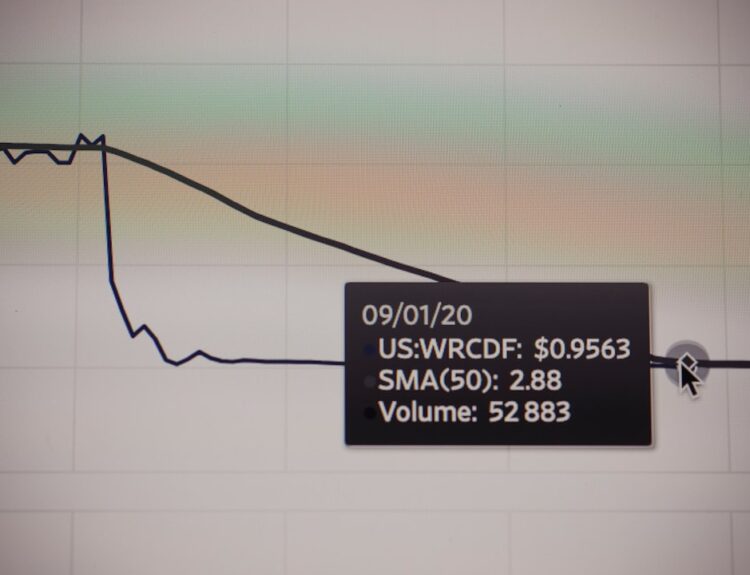Top-up loans are a financial product that allows borrowers to increase the amount of their existing loan without having to apply for a new one. This type of loan is typically associated with home loans, where homeowners can borrow additional funds against the equity they have built up in their property. The process is relatively straightforward; the borrower approaches their lender and requests an increase in their loan amount, which is then added to the existing loan balance.
This can be particularly beneficial for those who have experienced an increase in their financial needs since taking out their original loan. The concept of a top-up loan is rooted in the idea of leveraging existing assets to access additional funds. For instance, if a homeowner purchased a property for $300,000 and has paid down a significant portion of the mortgage, they may have built up equity that can be tapped into.
If they need funds for home renovations, education expenses, or other significant purchases, a top-up loan can provide a convenient solution. The interest rates on top-up loans are often lower than those of personal loans or credit cards, making them an attractive option for many borrowers.
When to Consider a Top-Up Loan
There are several scenarios in which a top-up loan may be a prudent financial decision. One common situation is when homeowners need to finance home improvements or renovations. For example, if a family wishes to expand their living space by adding a room or renovating their kitchen, they may not have sufficient savings to cover the costs.
A top-up loan can provide the necessary funds while allowing them to take advantage of the lower interest rates associated with their existing mortgage. Another situation where a top-up loan might be beneficial is when unexpected expenses arise, such as medical bills or urgent repairs. Life can be unpredictable, and having access to additional funds can help alleviate financial stress during challenging times.
For instance, if a homeowner faces an unexpected medical emergency that requires immediate attention, a top-up loan can provide quick access to cash without the need for lengthy approval processes associated with traditional loans. This flexibility makes top-up loans an appealing option for those who find themselves in need of immediate financial assistance.
Advantages of Top-Up Loans

One of the primary advantages of top-up loans is the lower interest rates compared to other forms of borrowing. Since these loans are secured against the equity in the property, lenders often offer more favorable terms than unsecured loans or credit cards. This can result in significant savings over time, especially for larger amounts borrowed.
For example, if a homeowner takes out a top-up loan at an interest rate of 4% compared to a personal loan at 10%, the difference in monthly payments and total interest paid can be substantial. Additionally, top-up loans typically come with flexible repayment options. Borrowers can often choose to extend the term of their loan or adjust their monthly payments based on their financial situation.
This flexibility can be particularly advantageous for those who may experience fluctuations in income or unexpected expenses. Furthermore, since top-up loans are often processed quickly, borrowers can access funds in a timely manner, which is crucial when dealing with urgent financial needs.
Disadvantages of Top-Up Loans
| Disadvantages of Top-Up Loans |
|---|
| 1. Higher interest rates compared to regular home loans |
| 2. Increased debt burden due to additional borrowing |
| 3. Potential risk of over-leveraging if not managed properly |
| 4. Limited eligibility criteria for top-up loan approval |
| 5. Longer repayment tenure leading to higher overall interest payment |
Despite their advantages, top-up loans are not without drawbacks. One significant concern is that they increase the overall debt burden on the borrower. By adding to an existing mortgage, homeowners may find themselves in a precarious financial position if they are unable to manage their increased monthly payments.
This can lead to potential issues with repayment and may even put the home at risk if the borrower defaults on the loan. Another disadvantage is that top-up loans can lead to longer repayment terms. While this may lower monthly payments, it also means that borrowers could end up paying more in interest over the life of the loan.
For instance, extending the term of a mortgage by adding a top-up loan could result in paying thousands of dollars more in interest over time. Borrowers must carefully consider whether the benefits of accessing additional funds outweigh the potential long-term financial implications.
How to Qualify for a Top-Up Loan
Qualifying for a top-up loan generally involves meeting specific criteria set by lenders. One of the primary factors considered is the amount of equity the borrower has built up in their property. Lenders typically require that homeowners have at least 20% equity before they will approve a top-up loan.
This means that if a home is valued at $300,000, the borrower should have at least $60,000 paid off on their mortgage. In addition to equity requirements, lenders will also assess the borrower’s creditworthiness. A strong credit score is essential for securing favorable terms on a top-up loan.
Lenders will review credit history, income stability, and existing debt levels to determine whether the borrower can handle additional debt responsibly. It’s advisable for potential borrowers to check their credit reports and address any issues before applying for a top-up loan to improve their chances of approval.
Understanding the Costs of a Top-Up Loan

When considering a top-up loan, it is crucial to understand all associated costs beyond just the interest rate. While many borrowers focus solely on monthly payments, there are other fees that can significantly impact the overall cost of borrowing. For instance, some lenders may charge processing fees, appraisal fees, or legal fees when approving a top-up loan.
These costs can add up quickly and should be factored into any decision-making process. Moreover, borrowers should be aware of potential penalties for early repayment or refinancing down the line. Some lenders impose fees if borrowers pay off their loans early or choose to refinance with another lender before a certain period has elapsed.
Understanding these costs upfront can help borrowers make informed decisions about whether a top-up loan is truly the best option for their financial needs.
Alternatives to Top-Up Loans
For those who may not find a top-up loan suitable for their circumstances, several alternatives exist that can provide access to additional funds. One option is a personal loan, which is typically unsecured and does not require collateral like property equity. Personal loans can be used for various purposes and often have fixed interest rates and repayment terms, making them predictable and manageable.
Another alternative is a home equity line of credit (HELOC). Unlike a top-up loan that adds to an existing mortgage balance, a HELOC allows homeowners to borrow against their home’s equity as needed up to a certain limit. This flexibility can be advantageous for those who may not need all the funds at once or who want to manage their borrowing more closely over time.
However, it’s essential to note that HELOCs often come with variable interest rates, which can lead to fluctuating monthly payments.
Tips for Using Top-Up Loans Wisely
To maximize the benefits of a top-up loan while minimizing potential pitfalls, borrowers should approach this financial product with careful planning and consideration. One key tip is to have a clear purpose for borrowing additional funds. Whether it’s for home renovations or consolidating debt, having a specific goal can help ensure that the money is used effectively and contributes positively to overall financial health.
Additionally, borrowers should create a budget that accounts for increased monthly payments resulting from the top-up loan. Understanding how this new financial obligation fits into one’s overall budget is crucial for maintaining financial stability. It’s also wise to consider setting aside an emergency fund to cover unexpected expenses that may arise during the repayment period.
Finally, borrowers should regularly review their financial situation and consider whether refinancing options might be available in the future. As market conditions change and personal circumstances evolve, it may become advantageous to refinance existing loans for better terms or lower interest rates. Staying informed about one’s financial landscape can empower borrowers to make proactive decisions that align with their long-term goals.
FAQs
What is a top-up loan?
A top-up loan is an additional loan that can be availed by existing home loan borrowers from their lender. It is offered over and above the existing loan amount and can be used for various purposes such as home renovation, education, medical expenses, or any other personal financial needs.
When should you consider using a top-up loan?
A top-up loan can be considered when you have an existing home loan and need additional funds for specific purposes such as home improvement, education, or medical expenses. It can also be used to consolidate high-interest debts or for any other personal financial needs.
What are the benefits of a top-up loan?
The benefits of a top-up loan include lower interest rates compared to personal loans or credit cards, longer repayment tenure, and the convenience of availing additional funds without the need for extensive documentation or credit checks.
How does a top-up loan differ from a personal loan?
A top-up loan is offered to existing home loan borrowers and is secured against the property, while a personal loan is an unsecured loan that can be availed for various personal financial needs. Top-up loans typically have lower interest rates compared to personal loans.
What are the eligibility criteria for availing a top-up loan?
The eligibility criteria for availing a top-up loan may vary from lender to lender, but generally, borrowers need to have a good repayment track record on their existing home loan, a certain minimum period of regular repayment on the existing loan, and a satisfactory credit score.



